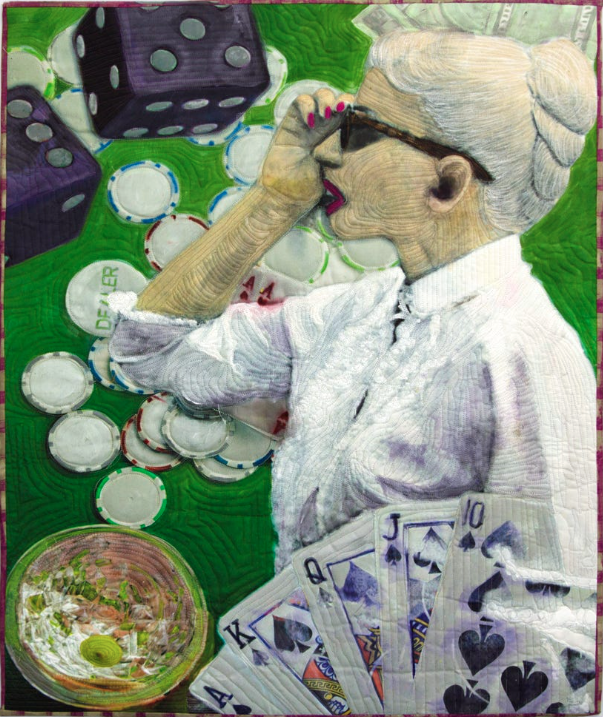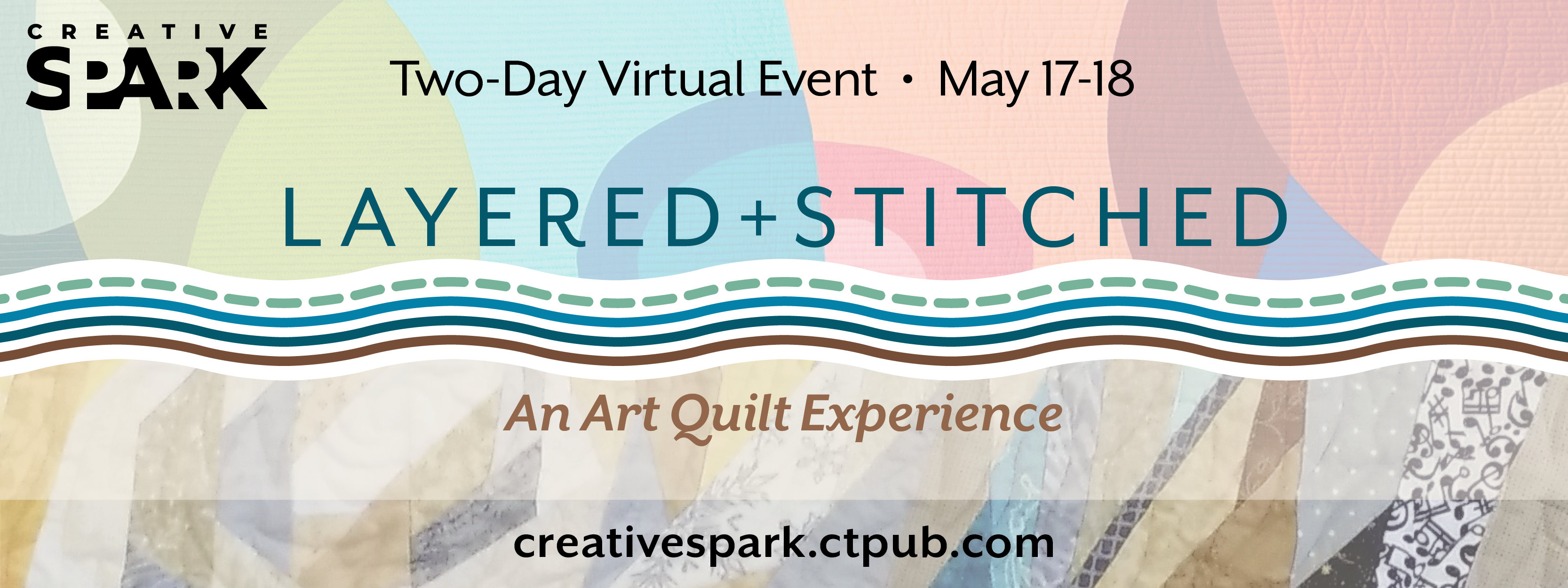Crafting an Art Quilt: Margaret Sanger
Posted by Margaret Abramshe on Apr 11th 2024
“Woman adjusting sunglasses” was a part of the Anthony Angel collection held in the Library of Congress. The photo was taken in 1957. Like everything else in the collection, it was given with no restrictions on its use. This is the second portrait in my series of women photographed around the time by Angelo Rizzuto. Although I don’t know these women personally, I am creating a backstory for each woman and exploring the limitations and opportunities they faced through the lens of history.”
The original photograph shows an impeccably coiffed woman looking in a shop window. In my imagination, she was shopping for the perfect pair of shoes or maybe a scarf. At that moment in time, she would have been dating, or possibly engaged. She was able to shop in the middle of the day because she didn’t have the responsibility of children and was able to earn a paycheck to pay for the purchase. It was a short window of independence for this young woman. A few years after the photograph was taken, that same woman would have much more control over her choices.

Image Caption: Rizzuto, Angelo, 1906-1967, photograph 1957
In 1960, the US Food and Drug Administration approved the birth control pill, freeing women from the restrictions of pregnancy and childbearing. This launched a new era for women. In that decade women had the option to put off marriage and children. Because women had the freedom to make this choice there was a steep drop in the birth rate for women under twenty-five over the decade. By 1975, this trend was ingrained in the culture. Birth rates rose for women in their 30s resulting in smaller family sizes and an increasing number of women in the workforce.
The fight for birth control began in the first decade of the 20th century. A woman named Margaret Sanger was a fierce advocate for this cause for most of her lifetime. There were many reasons for her passion for this issue. She saw her own mother die at 50 as the result of complications from giving birth to 11 children. Through her work with immigrants in New York City, Margaret understood that large families created cycles of poverty that held women as virtual indentured servants.
After working as a visiting nurse, Margaret realized that women had little or no knowledge about how to prevent pregnancy. Knowledge could change the course of a woman's health and her family's financial stability. She took action by publishing “The Woman Rebel '' which advocated for birth control. The publication was short-lived. She was charged under the Comstock Act. The 1873 Comstock Act defined birth control as obscene and made it a Federal offense to send contraceptive devices or references to it through the mail.
***Interesting fact: Until recently, the Comstock Act had been largely forgotten or ignored. But it's being cited in the federal case out of Texas that could curb access to the widely used abortion pill mifepristone.
In 1921 Margaret Sanger formed The “Birth Control League” and went on to successfully lobby Congress to allow medical professionals to prescribe birth control. In the late 1950s, with funding from heiress Katharine McCormick, Sanger recruited researcher Gregory Pincus to develop an oral contraceptive. Margaret’s passionate advocacy changed the life of the woman in my source photograph and my life as well. In her honor, I am going to name the woman in “Gamble” Margaret.

Image Caption: Margaret Higgins Sanger Born 1879. Died 1966
Gamble’s composition is created as a digital collage. In French collage means to glue. It is an art form embraced by the surrealist community and continues to be used today in digital and physical forms. I have been developing this process over the last few years. My earliest art quilts were collaged physically using fussy cutting, photo transfers, and fabric glue. Today I have fully braced using my computer as my initial vehicle for creating a composition.
I begin with the photograph that I used from the Library of Congress. My first step is to take the figure out of the environment where it was photographed. I remove the background using a digital tool. Next, I spend some time adjusting the values and trying to sharpen the image as much as possible, given the nature of vintage photographs.
The next step is to create a visually engaging composition. As an artist, I am arranging design elements. Repeating geometric shapes in a variety of ways like the circles in the players' chips, the martini, and the dots on the dice creates an interesting visual rhythm. Some of these shapes appear behind the figure and some of these shapes appear on top of the figure giving the illusion of space on the flat surface.

A key element is color. Of course, the photograph was in black-and-white. So now I as an artist can come in and decide what sort of color choices I’m going to make. In this composition, there is a green background and large violet cubes. Green and violet are cool colors, and they play well together. The blouse is white; a neutral color not found on the color wheel. Using changes in its value, saturation, and intensity from cool to warm makes it far from visually neutral. To draw the viewer's attention to the center of interest (the figure) I used a bright pink. In color theory pink is a tone of red. The red of course is the opposite of green on the color wheel and therefore has a nice visual impact against the background.
Colors created on a computer do not have the same look when printed. When the fabric arrives in my studio with the digital composition printed on it, I get out my paints. I use acrylics and liquid watercolors combined with either water or textile medium. I also use water-soluble pencils. The entire surface is essentially recolored. I also often paint out or paint in different elements to improve or correct mistakes in the composition.
When I’m done, I layer the linen, and cotton canvas on fusible, fleece, and free motion, quilt the surface paying attention that these lines of color created in thread add to the visual depth. When working with the face I draw, as if I am doing a contour drawing of the facial structure.
Like all artists, I continue to push the limits.
What remains constant is my passion for creating and adding meaning to my world and hopefully to the world as a whole.
Learn more about my process of designing art quilts at Layered & Stitched: An Art Quilt Experience, hosted by Creative Spark.
About my live presentation: Elements of Art for the Art Quilter
Join Margaret Abramshe as she shares design elements and how they can be used to create, evaluate, and inspire your projects. Explore materials commonly used by art quilters to amplify individual elements and understand how to select which elements to use to inspire new ideas. By the end of the session, walk away with the skills to re-evaluate the material in your home studio with fresh eyes and plenty of inspiration.
Save your spot today and use the code "ART24MA" at checkout for $20 off of the event. See you there!








